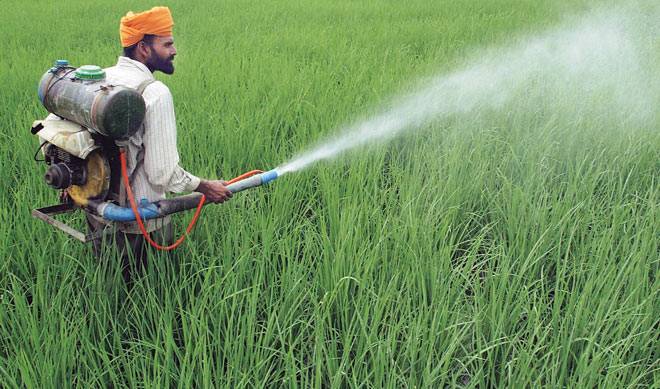
Pesticides and fertilizers are a vital part of agriculture. In order to meet the demand for food for the booming world population, usage of pesticides and fertilizers are unavoidable factors.
At the same time, widespread use of fertilizers is creating a severe setback. In India, the usage of deadly pesticides accounts for 30% of the total usage of pesticides in India.
Although the central committee had reviewed the use of 66 pesticides and recommended the ban of 13 pesticides, and banning out the rest by end of 2020, the process is still on. The impact creates on the environment, eco-system and human life are severe. Though in some pesticides the immediate results appear to be mild but the health hazard that it can trigger is acute illness.

Here is a list of 18 banned pesticides and the impact it creates on living forms. Many of the pesticides are toxic even in low dosage. Scientific methods of farming with focus on organic fertilizers have to be used in order to ensure safe food production and environment.
1. Benomyl
Benomyl is a fungicide that is selectively toxic to microorganisms and invertebrates like earthworm but not to mammals. It mixes well with soil and doesn't dissolve in water. The major use of Benomyl for the control of fungi disease on fruits, vegetables and ornamental are pre harvest applications.
2. Carbaryl
Carbaryl is a chemical used in insecticide. It is a white crystalline solid. Carbaryl is toxic to insects and kills both targeted and beneficial insects. Although approved in U.S, it is not legal in many countries. It is also toxic to humans.
3. Diazinon
It is an insecticide that is used in agriculture to control insects on fruits, vegetables, nut and field crops. It is used for household insects, lawn and garden insect control. It is hazardous to nervous system and exposure to diazinon affects the functioning of nervous system.
4. Fenarimol
Fenarimol is a fungicide used on ornamental plants. It is mainly used to control biosynthesis of important steroid molecules. Fenarimol is low toxic to mammals and birds, but highly toxic to fish and dolphins.

5. Linuron
This is used to control growth of grass and weeds for the purpose of supporting the growth of crops like soybeans. This has been found creating issues in animals as an endocrine disruptor.
6. Methyl Parathion
Methyl Parathion is not allowed for sale in almost all countries around the world. It is used as an insecticide on crops, including cotton. It is an extremely hazardous chemical.
7. Methoxy Ethyl Mercuric Chloride
The registrations, import, manufacture, formulation, transport, sell is prohibited and its use is completely banned
8. Sodium Cynaide
It is used widely in illegal cyanide fishing. Its application can also be seen in mining industry, it has high affinity for metals.
9. Thiometon
Thiometon is an alkyl thioether dimethyl organophosphorous ester of moderately acute toxicity.
10. Tridemorph
It is a fungicide used to control fungus in cereals. The WHO has categorized it as a moderately hazardous pesticide.
11. Trifluralin
It is commonly used to control growth of weed species by adding it to the soil.The environmental degradation process has been reported on continuous usage,
12. Alachlor
It is an herbicide which is used to control annual grasses and weeds in crops like Sorghum, Soyabeans and Corn.
13. Dichlorvos
It is widely used to control household pests . It is used to get rid of pests in greenhouse, outdoor fruit and vegetables. It is harmful when the person using it come in touch with it.
14. Phorate
It is an insecticide that controls pest by systematic fumigant action. it is used against sucking and chewing insects. This chemical is extremely toxic and exposure to it include blurred vision, headache, inability to concentrate, fatigue and diarrhoea.
15. Phosphamidon
It is an insecticide, which is highly toxic to mammals and is listed as hazardous by WHO.
16. Triazaphos
It has been registered as an insecticide in many Asian Countries such India, China and Indonesia.
17. Trichiorfon
It is used as insecticide, home lawns , non food contact areas of food and meat processing plants. It is also used overseas on cattle as a pour on treatment.
18. Fenthion
It is an insecticide with low mammalian toxicity; it is used in agriculture and against mosquito larvae in tropical fresh waters.









